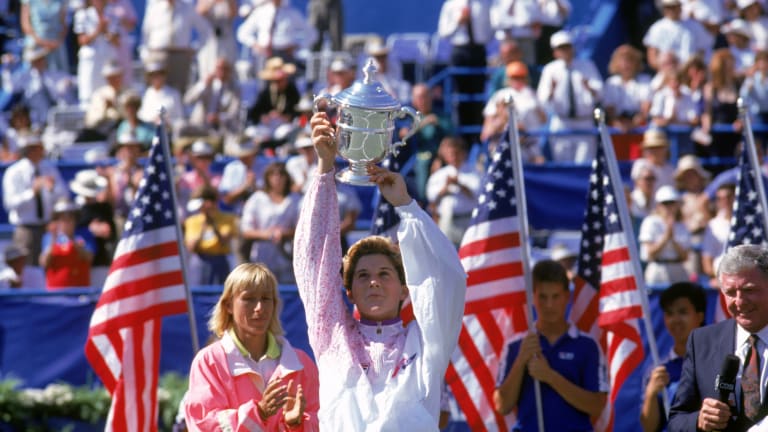Pressure Points
Monica Seles: The Woman to Play for the Earth
By Jan 12, 2022Pressure Points
Pancho Gonzales: The Man to Play for the Earth
By Jan 12, 2022Pressure Points
Pressure Points: Inside the toughest matches for Serena, Federer, Nadal, Osaka and Djokovic
By Jan 12, 2022Battle of the Sexes
Nick Kyrgios beats Aryna Sabalenka in "Battle of the Sexes" reprise in Dubai
By Dec 28, 2025Burning Questions: 2026
Will we see a Career Grand Slam from Carlos Alcaraz, Iga Swiatek, or Jannik Sinner?
By Dec 28, 2025Unsung Heroes
A born entertainer, Danielle Collins adds a new stage to her repertoire in 2026
By Dec 27, 2025Burning Questions: 2026
Can anyone consistently challenge Carlos Alcaraz and Jannik Sinner next season?
By Dec 27, 2025Coach's Corner
Polina Kudermetova reportedly hires former world No. 1 Dinara Safina as a coach
By Dec 27, 2025Coach's Corner
“Right now, I’m hurting”: Juan Carlos Ferrero opens up on Alcaraz breakup
By Dec 26, 2025Player News
Jack Draper to miss Australian Open as he continues rehab from "most challenging" injury yet
By Dec 26, 2025Monica Seles: The Woman to Play for the Earth
In part two of our out-of-this-world series, the former world No. 1 is tasked with putting her famed mental strength to the ultimate test.
Published Jan 12, 2022
Advertising
Advertising

Seles won back-to-back US Open titles in 1991 and 1992.
© 1991 Getty Images